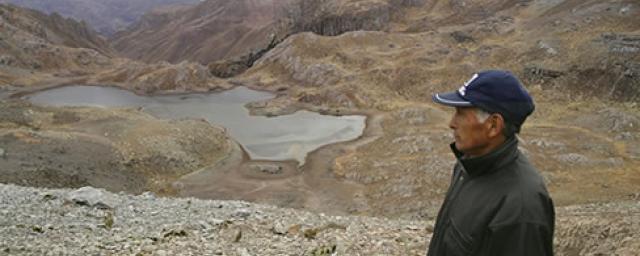
Climate change is causing glaciers to melt all over the world. Their disappearance is a serious threat to the viability of crops and the livelihood of agricultural communities.
Oxfam, through the Center for Agricultural Development (CEDAP) in the region of Ayacucho, supports a range of actions by rural communities to enable them to manage their natural resources – mainly water – though active participation by communities and local governments in the region.
Valerio is a farmer and a guinea pig producer. He tells how in his district the snow remained on the ground almost all year round in the area known as “Ritipata” (covered in snow), and adjacent areas contained lagoons which provided drinking water for animals and kept grazing land green.
“Over time, the snow has gradually melted. Before, there was snow all the time. There were springs. The area was completely green and the lagoons were fed by the snow. Little by little, the run-off of water has dried up. This change in the climate has affected subsistence crops and grazing land. My animals have no pasture and, most importantly, they have no water. The lagoons are dry.”
Valerio adopts a range of strategies to deal with the change in the climate. “Now we build enclosures, we conserve pasture and we rotate animals from one enclosure to another. We harvest rainwater during the winter and build simple reservoirs and enclosures in the water inlets.”
Originally published by Intermon Oxfam (Spain). Photo Credit: Paula Plaza/Christian Aid